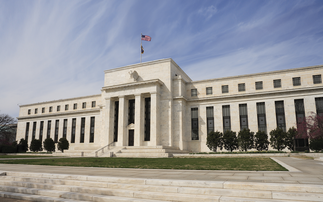Axel Lomholt of iShares EMEA looks at the origin and development of exchange traded funds and what opportunities are available for investors
Another recent evolution with swap-based funds has been the use of multiple counterparties, which allows for a more competitive swap pricing process and minimises exposure to any single swap provider. Increased product transparency has been a further development. Typically, transparency around the holdings of swap-based funds has been low and investors have not been able to analyse or quantify the risks embedded in the structure. Some providers and funds now enable investors to view the collateral and index holdings, swap counterparties and aggregate counterparty exposure on a regular basis.
ETNs are a third type of exchange traded instrument. Like ETFs, they are exchange traded, track a benchmark and can be bought and sold throughout the day. However ETNs are investment vehicles backed by debt. They can be unsecured, where the investor is fully exposed to the ability of issuer to deliver the objective of the ETN, or secured, where there is collateral in place as protection.
ETNs are frequently used to offer exposures that cannot be achieved with a Ucits III-compliant ETF. They are commonly Ucits-eligible but not Ucits-compliant instruments. This is because the Ucits III rules set an absolute maximum exposure of 35% to a single commodity or group of closely related commodities and many of the ETNs deliver single commodity exposure.
In Europe the most popular exposure provided by the ETN structure is commodities. They are commonly referred to as ETCs and thought of as a distinct fourth type of exchange traded instrument, but levels of transparency and collateralisation can vary by product. The largest ETCs in Europe provide exposure to gold and over 95% of these assets are backed by physical holdings of gold bullion in an ETN structure.
It is important to note that where a product is complex, such as an ETC or ETN, it does not necessarily signify that the structure is poor, or the outcome for an investor will be inferior. It means that it is up to the investor to assess the product and up to the provider to decide how safe and transparent the structure will be.
The questions investors should be asking
As demand for ETFs has grown across the world, providers have developed their products to meet the needs of contemporary investors. In many cases, this has included bringing greater transparency into the product structure, minimising the investor’s exposure to counterparty and credit risk, and innovating in order to deliver efficient access to the asset classes investors are most interested in.
However with more and more products coming to market, investors need to appreciate their differences in order to select the most effective way of expressing their investment views. After looking at the experience and pedigree of the product provider, institutional investors should begin by asking questions around what securities the ETF index contains, what the product structure is and what it means for their exposure to risk, their ability to trade the product and the total cost of ownership.





